The KT R1c handheld has had a very turbulent couple of years in development, with many unforeseen obstacles and multiple hardware revisions. But things have started picking up pace in the past couple of weeks and many aspects of the KT R1c are now finalised.
This article was originally posted in 2020. It has been updated to reflect the changes made and to report on current project status.
It started back in November 2020 over on the Chinese forums. A user named niluanxy posted a long preamble about a device he was working on called the R1. Over the course of a few posts, we learned that this handheld was going to be quite different from anything available at the time. Of course November 2020 was a long time ago, and we now have the likes of the Odin, GPD XP+ and even the RG353P competing in a similar field. But the KT R1c stands alone in that it is the work of one man with a vision.
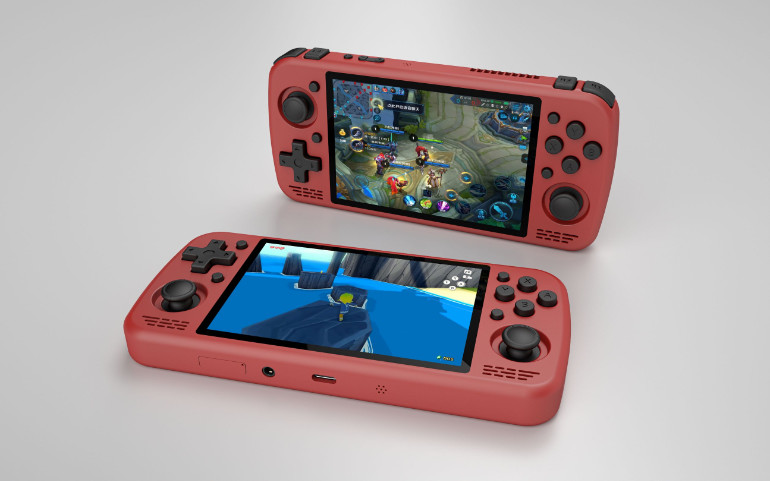
This device started life as the KT R1, and it was once planned for there to be two versions. I believe initially the plan was for a flagship R1 and a lesser powerful R1c. Over time though, focus shifted and as hardware availability changed the R1 was put on the back burner in favour of the R1c. But hardware specs of the KT R1c have changed over time as well, and the final product looks to be something completely new in the handheld world.
KT R1c SPECS
The KT R1c is still due to be released with multiple SKUs. Predictably, RAM and internal storage are among the variants as we often see with other devices. But interestingly, niluanxy has also spoken of a variant concerning the dpad/analog stick position. If there’s one way to stop people whinging about dpad location it is to give them the choice, I suppose!
Over its development lifespan niluanxy has settled on multiple different SoC choices for the KT R1(c), only to later discover that they were not available anymore or prohibitively expensive. Amlogic S922x was the original choice but a Unisoc T618, Snapdragon 845 and Unisoc T610 were also shortlisted at various points. Thankfully though, it looks like the brains of the device have finally been cemented. The KT R1c will (probably) be powered by a brand new SoC, the MediaTek Helio G99, aka the MT6789V.
The Helio G99 comprises 2x Arm Cortex-A76 cores up to 2.2GHz, and 6x Arm Cortex-A55 up to 2.0GHz. It’s paired with a Arm Mali-G57 MC2 GPU. This SoC is so new that currently there are no benchmarks available on GeekBench. It is pegged by MediaTek as a powerful gaming SoC, so on paper it seems like a reasonable choice. According to niluanxy, performance of this chip is better than the Unisoc T618 found in the PowKiddy X18S.

| KT R1c Specs | |
|---|---|
| SoC | MediaTek Helio G99 (MT6789V) |
| RAM | 3GB/4GB/6GB/8GB (LPDDR4) |
| Storage | 64GB/128GB/256GB (UFS2.1) |
| Wireless | WIFI 802.11 b/g/n/ac & Bluetooth 5.2 / 4G* |
| OS | Android 12 |
| Screen | 120Hz 4.5" 1620*1080 3:2 IPS Touchscreen |
| Battery | 5000mAh with 18W/35W* fast charge |
| Expansion | MicroSD |
| Size | 169.8 * 79.5 * 18.3mm |
*4G comms only available on the 6GB RAM version and above
*35W fast charge only available on the 6GB RAM version and above
Other features such as GPS, ambient light sensor, distance sensor, electronic compass, gravity sensor, NFC, six-axis gyroscope are subject to cost at a later date. The 6GB model will apparently include all of these, whereas the lower models may only include some.
LCD
The KT R1c is set to use a 4.5 inch 1620*1080 IPS panel, with a ratio of 3:2. The perfect GBA ratio, but usually not so great for other systems. However, that ridiculously high resolution panel will do wonders for image scaling. We will have to put up with some narrow black bars in both 16:9 and 4:3 emulated systems though.
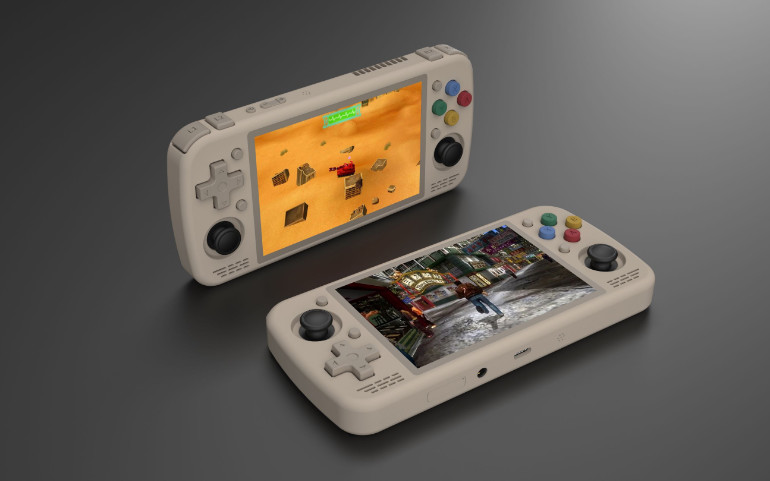
The panel has 5 point capacitive touch and a 120hz refresh rate. Niluanxy himself has stated that the screen is the same as the ones used in the BlackBerry KeyOne.
KT R1c OPERATING SYSTEM
The KT R1c handheld will run Android 12 out of the box. Back in february there was a short video shown of a custom launcher in development for the KT R1c. Whether or not this will still ship with the device is not know yet.
ROADMAP, LAUNCH DATE AND PRICE
Earlier this year Niluanxy launched a simple website with a timeline of development dating back to the beginning of 2022. Although this project has been going on way longer than that, things are finally moving at pace and much of the doubt around hardware specs has been resolved now.
The PCB design is in testing by MediaTek and the shell is also completed.
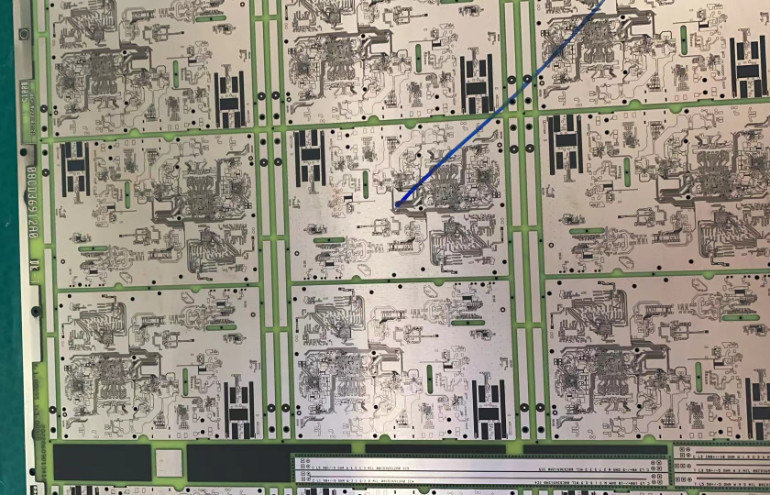
Niluanxy has purchased at least some of the processors from MediaTek already, so it does look like this device is past the point of no return now.
Pricing in China begins at around $150, presumeably for the model with 64GB storage and 3GB RAM. That price will probably translate to more like $170-$180 shipped. Obviously the models with more storage and RAM will cost much more too. Assuming this SoC rivals the likes of the Dimensity 900, 1200 and Snapdragon 845 in GPD’s and Ayn’s offerings then I think this price is OK.
The KT R1c will be launched on IndieGoGo in around a month, with shipping to follow. It’ll also be available to buy directly on his website at some point (although whether that’s the same site I linked above I don’t know).

The KT R1c handheld is the dream of one talented man working with a factory in China to get this device brought to life. Although this is his first foray into handheld manufacture, he does have a project under his belt already. The GPD Win2 aftermarket cooler was engineered and manufactured by him, and successfully funded on IndieGoGo last year.
THOUGHTS
I will always back the guy that goes it alone and tries to do something that no-one else is doing. Whilst this market is getting crowded now, the KT R1c represents more than just another gaming machine. I cannot imagine the blood, sweat and tears he must have shed to get this far, and it really looks like it’s reaching the final leg now.
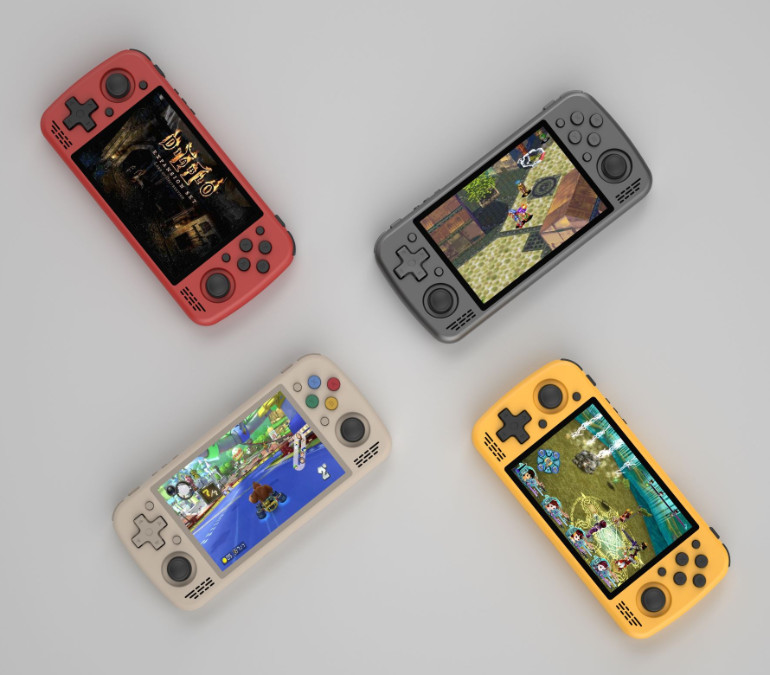
On a more objective note, I think the 4.5″ screen is a great size for a device like this. I find the Odin a little too large, the RG353P way too small for Android gaming and the GPD XP+ is just insanely wide for some reason. This looks to be a nicely compact device but with a large enough screen that doesn’t waste any space in the shell. I am looking forward to seeing the benchmarks for the MT6789V.
I wish niluanxy all the best with his endeavour, and I’ll be keeping my eyes open for the IndieGoGo campaign soon.

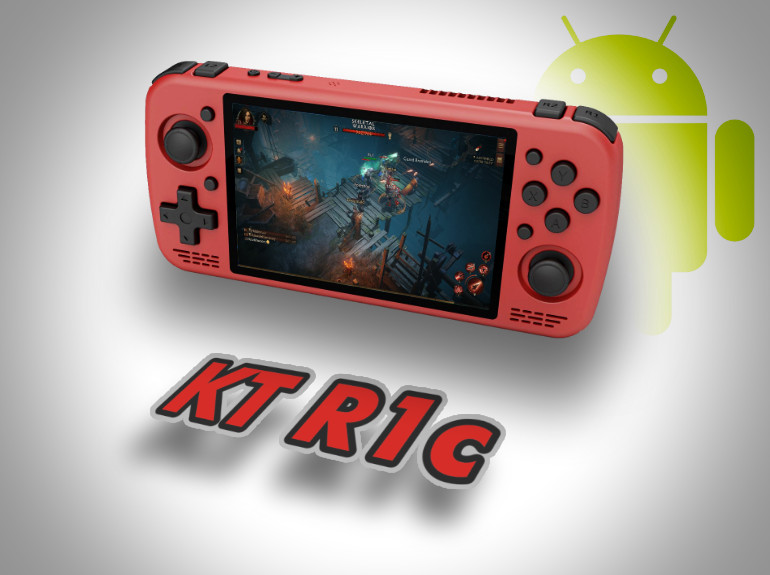
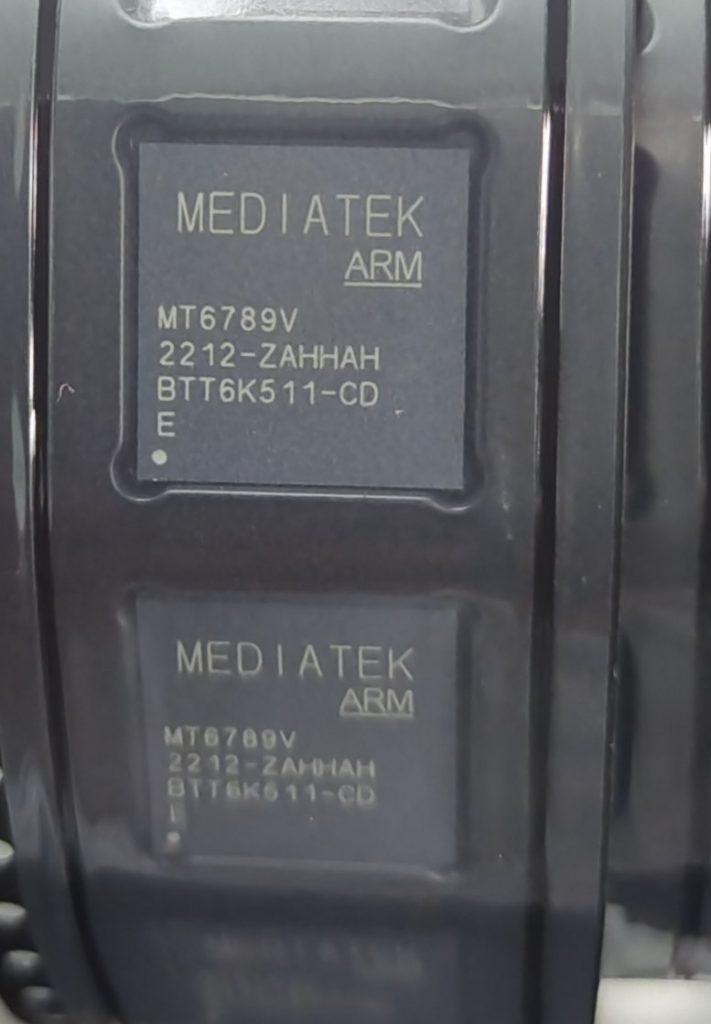
This reminds me a bit of the GCW Zero project, execept the GCW Zero actually shipped.
I think for an android device I am more than happy with the Ayn Odin, if this device could/would support something like batocera linux then I may jump for it, otherwise in android only, it seems too little way too late (for me).
Latest news on this is that he is ditching the SD845 for now and is going back to the T618 or even the T610.
If this is true, then I’m not buying it. Because that will make it no better than the X18S. Which I already have.
I believe it’s changed again. Ir seems to be coming along though now. It will now use a MediaTek G98. Will be interesting.
Did you read the article.
After 8 months and few updates (unable to procure the chips needed in May) I’m guessing this is now Vaporware?
It’s just too perfect to be true 🙂 But I hope I will have a chance to back up this awesome project 🙂
That looks really cool! But I wish he’d just take this design and turn it into a non-Android thing that can run Lakka.
Given the recent benchmark test I wonder if the delay is partly down to the idea of swapping Android out for Harmony OS
oh man, I need this on a 5 ″ 4: 3 screen
Any updates on this one? Would love to hear more details
The creator has been very quiet over the past few months. We’ll have to wait and see.
I gotta get me one of those when they come out. Super hyped for this. 😀
Wish he sticked to the more traditional D-pad, looking promising however and I might be holding off on the purchase of RG351p now
This is vaporware now. Too bad, because a 4 inch 4:3 is what I always wanted to have
You were wrong David, it is coming!
Haha well technically this is a different device, and it’s not 4:3 any more, so you were still kinda right 😉
If the emulators runs like on the Beelink GT King then shut up and take my money!
In my opinion Google play store is needed for the buy of Redream (for upscale). If the play store is not on the device it must have the possility to install it (with root because the bootloader is unlocked)?.
And maybe there will be custom Android roms.
But there is one thing that i am still missing. A second USB port for the rom collections (but the thing with the SD card is also an solution). I hope, the shipped Android ROM will have NTFS support.
I’m starting to wish me a 5″ 4:3 screen. 🙂
And 150 – 200 is for me a acceptable price range. I have paid the same for a RPI 3 Gameboy.
This is great! The S922X is a great chipset! The specs look promising. My only gripe is that they need to round off the edges and add more grip to the back. Right now this handheld and the Powkiddy X18S are the Handhelds to look out for in 2021. I hope this won’t be another Retroid Pocket 2. The D-pad and Face Buttons were too stiff and the Android implementation was terrible. I hope this Handheld fulfills all my expectations. Keep up the good work!
What are the main benefits of getting this vs. installing Retroarch on an Android phone with 6.x” AMOLED screen and something like a Razer Kishi? If you already have the phone, then you’d be paying $50-80 only for the gamepad dock.
People ask this all the time about various things. Why buy an MP3 player when you can use your phone. Why buy a PC when you can use a console. Why buy a kettle when you can use a saucepan. For me, a phone is a tool that I rely on to work for at least 24 hours per day. If I started using it for emulation I’d then need to be tethered to a charger. Either that or buy another phone for the kishi. At that point, might as well buy the handheld. And yes, I own an MP3 player
This really looks promising, though I also wish the resolution was a multiple of 320×240.
This system almost got there. It has just one failing, the screen. 4:3 aspect ratio? No thank you. Especially for the potential price. Now if you change it to 1024×600, ok that’s good. They got so close…
Lol you know nothing about how emulation works right? 4:3 is the best aspect ratio for most of the retro consoles.
Oh? What about PSP? Gamecube/Wii? Yes, those are widescreen systems, are they not? The AmLogic S922X is capable of running emulation for those systems. On top of that this system will be running Android 9 so standard Android gaming is also a thing as well as being able to play video’s and web content, so why not a 16:9 screen? Hmmm? 4:3 makes no sense…
In the case of gamecube and wii they are quite literally not.
You clearly never owned either one of them then. Many GameCube titles were widescreen and ALL Wii titles were widescreen. Yes, yes.
Gamecube and Wii both ran a stretched 480p signal for widescreen so not really applicable
No they didn’t. Stop spreading disinformation.
I’d prefer a smaller model with a 3.5 inch screen.
Id rather not, we have many systems to with a 3.5” screen and we need more options with a bigger screen.
3.5” screen is small
Many devices below $100 can emulate N64 and Dreamcast in a playable way. Also many people already have those devices. Having better Dreamcast and N64 performance and maybe some SEGA Saturn for me personally is no reason to switch devices. For someone looking for his first device it could be the best choice.
Years ago, in the era between the JXD S7800 and the GPD XD we had the same development. Several new devices, different price, performance and build quaility and sometimes the device considered the best one was replaced by a new contender. But all in all there was little to no progress and everything could play more or less the same games.
Then after the GPD XD we had two directions. The GPD Win with a much higher price and more capabilities and the GCW Zero as a smaller, cheaper device, which could not provide what was promised. Than came the RS97 and soon this marked developed up until where we are now.
But now we are again at PSP, Dreamcast and N64. This time for a smaller prices and with more pocket friendly devices.
The RG 350M was best in build quality but for its price tag too underpowered. The RG 351P has a weird aspect ratio. The RP2 is good but doesn’t have the build quality of the 350M and also Android as well es the form factor isn’t for everyone. Having no ultimate handheld in this performance range in my opinion leads to again several handheld competing in being the ultimate device up until the mentioned performance level.
Instead I would wish that the development would focus on taking new directions. This would mean that one company manages to develop such an ultimate handheld and the community focussing on that one so the developers can’t make a profit in “only” providing another handheld for Dreamcast, PSP and N64 and instead would try to develop handhelds with the capability of emulating Dreamcast, Wii and PS2 below the price range of the GPD Win.
What are those many devices that can emulate N64 and Dreamcast well? I can only think of three and they don’t apply. OGA and clones don’t emulate them well, just some games. Retroid 2 emulates N64 quite well but not Dreamcast. And Powkiddy x15 can emulate them quite well but has some other flaws. But they are not many…
I never said that many device can play them well. I even used ‘playable’ as well es described in my whole post, that I am aware of the fact that most of those device don’t deliver good/great/perfect emulation of both N64 and Dreamcast.
My point is that even tough we didn’t achieve perfect emulation of Dreamcast and N64 and especially not in combination within a device that also has no other flaws, for nearly a decade (The JXD device came in 2012 as the first okay ones, but even before that we had Yinlips…) we have emulation that reaches up until N64/Dreamcast and no development beyond that (not regarding the GPD Win, because it is in a much higher price range) border.
I wanted to express that I hope that we finally go beyond N64/Dreamcast (and sometimes Saturn) and finally are able to include PS2/Gamecube/Wii with those emulation handhelds, since we achieved N64/Dreamcast so many years ago but than had ‘only’ improvement.
Well said!!!!!!!??as I own them all. Gpd xd and plus, rg300,rg350,rg341p, gpdq9 PSV,rp2, rgb10, pi4b, pi3b in gameboy custom case custom build, q90, v90, PSP, vita, PSP go, all game boys 2ds, 3ds, dsi, etc. Many more even the singularity monster tegra..lol.
Does anyone know if it is possible to replace android with batocera Linux?
Simple answer, no.
EmuELEC apparently runs on this hardware so I don’t see why not with some work.
It would take a serious effort to compile(and recompile) code for the SOC that will be in this system. Technically it is possible(as it’s already been done for similar SOCs), but it’s not very likely unless the firmware for this device can be directly accessed and it becomes very popular, which isn’t very likely in it’s current configuration.
EmuELEC is already available for s922x but yes more work will be needed to accommodate the LCD and controls. It seems that the maker is open to any new OS being developed so I imagine with his input (if needed) it’ll definitely happen.
Damn. I loved his cooler and seeing him taje such a massive undertaking soon after is impressive! Can’t wait to see pricing.
Love the look of the KT R1! This KT R1 almost looks like a Retroid Pocket 2! I do however like all the color schemes. Some are my favorite color schemes especially the white then the grey. I’m not sure about the interface though. I often find Android interfaces complicated to operate when it comes to the playing of video games. That is the issue I’m having with the RP2 and the GPD XD Plus. Which is why I just purchased myself a PocketGo S30. I’m still waiting on my PocketGo S30 to be delivered. Though this KT R1 looks interesting, I often prefer Linux based retro handhelds because they are so much more simpler to navigate through and add roms.
Quite excited by this one! Please keep us updated of any news about this project.
So it’s running Android, and has a SIM slot…. Is it a phone? Like does it have a Microphone?
And is it a touchscreen?
sim for data afaik. has a touchscreen yes.
Honestly I grabbed a razer kishi and a gamesir x2 and use them with my Samsung S20 FE edition and there is really no need to look further. If you have a phone just use that with one of these and always get the best performance. I can actually run dolphin emulator on my phone which blew my mind. Plus I can use my older phones if I want something on the go. They are faster and have oled screens. I love stand alone devices but my closet is full of them. After the honeymoon phase is over those devices just collect dust.
>>Could Be The One You’re Waiting For
OMG it might just be! With that design, it looks fant-
>>800×600
No
If the compute module 4 handheld has an 800×600 screen I’m gonna get really pissed.
It’s not as bad as the OGA resolution, but I’ve used an Amazon Fire 7 Tablet that has such a screen and let me tell you, I did not have fun with how games scale up on that. It’s never gonna look good.
Yes, it’s an unfortunate resolution. However, pixel density is quite high so it might not be so bad. If all else fails, roughly 60-70px of black border at the top and bottom for 2x integer scaling on some systems.
I’m guessing this will run Android(since Amlogic will sure provide Android source for this), which makes me think, Android handhelds, like GPD XD or RP2, which are considered good ones in retro handhelds, but in normal world they’re plain shit comparing to normal android phones, sure this R1 thing will be better than GPD XD/RP2 spec wise, but it’s still chunky and most probably shitty made. why can’t we have good things? for god’s sake we need normal Android phone companies to come here.
I don’t see that happening. Sony tried making a gaming phone and Nvidia tried making a dedicated Android handheld. Both stopped doing that because it wasn’t profitable enough. So therefore I see normal Android phone companies making high performance phones and some detachable controllers but I don’t see them making dedicated handhelds.
If they release a dedicated handheld with good build quality and performance they just could release a standard phone for a smaller price since they won’t have to include the handheld parts and also open themselves to a higher market audience. So they just have no reason to build an Android handheld.
Sony tried a very long time ago, Shield(the handheld) is 7 years old, that’s a very different time back then. Also “open themselves to a bigger market” doesn’t mean that every consumer in that bigger market will all buy every product in that market, they have competitors, but if any normal company come to the handheld market, they can dominate easily.
@JimmyZ your right much changed since the Xperia Play and the Shield Portable where released. Still there must be a reason they don’t try again. At the same time Xiaomi developes the Black shark gaming phones. Gaming companies like Asus ROG and Razer release gaming phones also. None of them release a dedicated handheld.
Why do you think that is?
I don’t think it’s just because they didn’t think of it or just because they are to blind to see the potential it would have. I think they analyzed it quite well and they know that even if they would dominate that market, they would dominate a market that’s not profitable enough. Therefore Razer rather releases a smartphones that competes both with ‘normal’ higher end smart phones and those several other phones marketed at smartphones for gamers than release a handheld that would be without any competition.
Not seeing it happen is the reason I beleave it it not profitable for those mainstream hardware manufacturers.
Only a few people spend several houndred bucks for a device like this. Many people spend it for a smartphone since it can be used as a phone as well. Many people spend it for a mainstream handheld like the switch because it has standalone games. But for a device that just is capable for playing emulators and gamers there phone could play also, only a few people are willing to spend a high price for that.
Those chinese brands can produce for a much lower price and they also don’t suffer as great from a bad image from bad manufactured hardware which means they produce for a much smaller price and therefore a much smaller profit is big enough for them.
I have to agree, with an addition, what’s with the 4:3 aspect ratio? No. 1024×600 would be greatly better for emulation of wider variety systems.
That would be better for Android games and emulating newer systems, but I guarantee if he’d stuck a widescreen in this thing people would be complaining about black borders on the left and right for retro systems. You can’t please everyone. I agree with the 4:3 ratio, it was the right choice. The resolution wasn’t though.
People who complain about “black borders” need to remember the concept of wider compatibility, especially with the SOC this system will have. 16:9 would have been a better choice. Or perhaps one of each and a resolution adjustment? One model with 1280×720(or 800) and one with 1024×768, both with the same specs otherwise. Then each user can choose which aspect ratio is more important/useful for them. I’d bet real money that the widescreen model would be the more popular model…